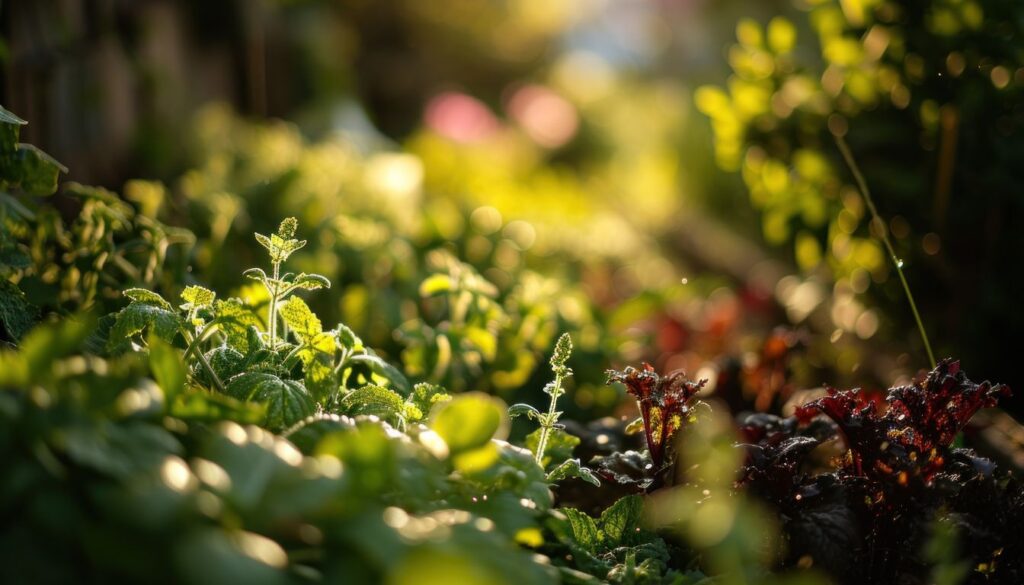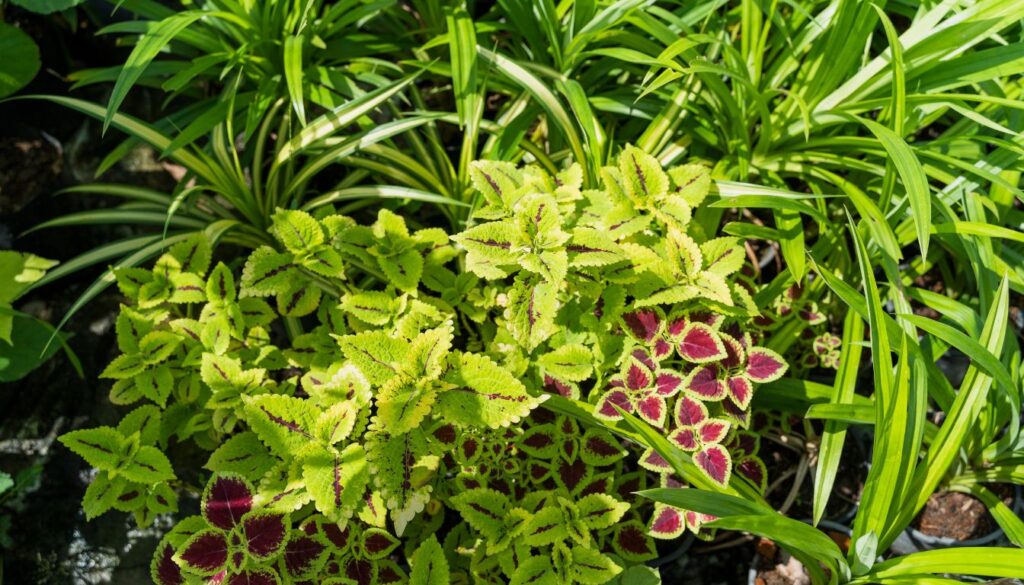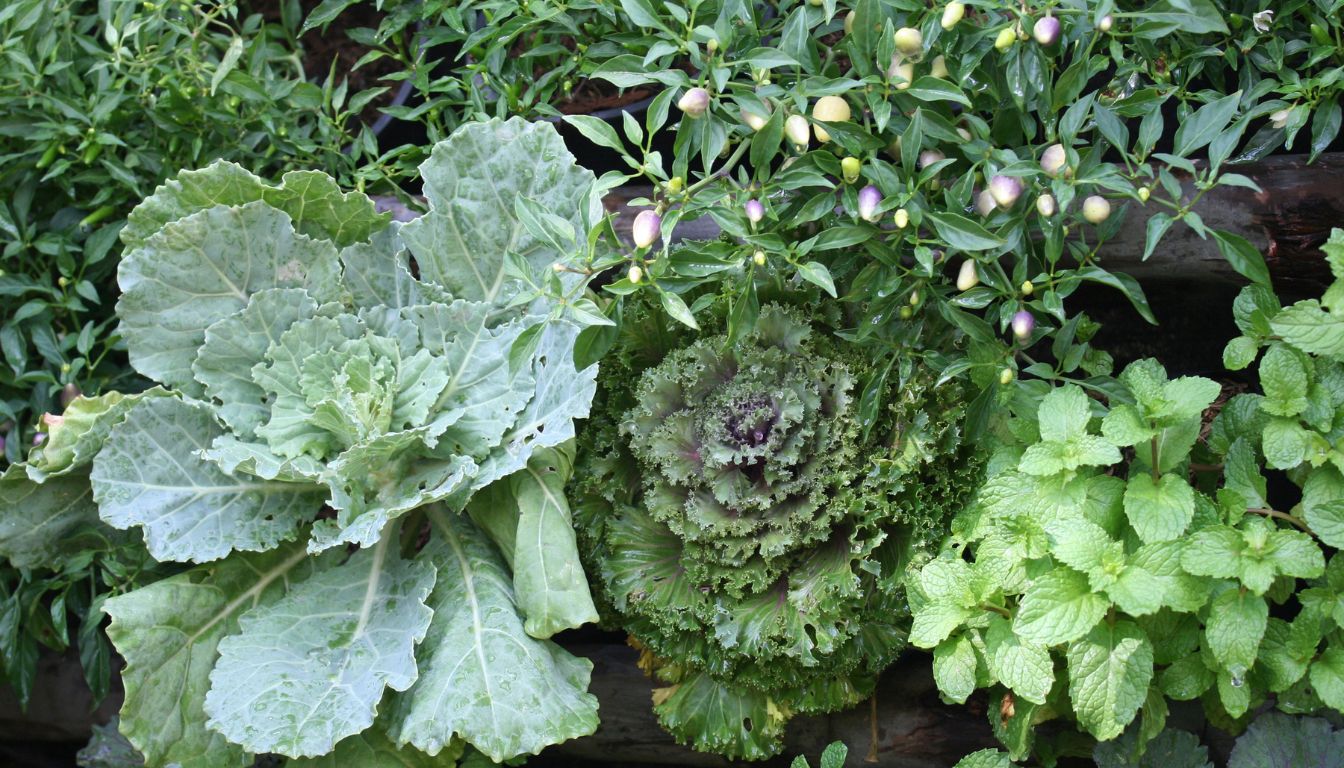What herbs can be grown together? Cultivating herbs is an enjoyable activity that can enhance the taste of your meals and the aesthetics of your garden. However, it’s important to note that not all herbs can thrive when planted together. Certain herbs have specific requirements for light, water, and soil, while some can hinder the growth of others.
When deciding what herbs to grow together, it’s important to consider their requirements. For example, herbs that need full sun, such as basil and rosemary, should be planted together, while those that prefer partial shade, such as cilantro and parsley, should be grouped separately. Additionally, some herbs, such as mint, can be invasive and should be grown in their containers to prevent them from taking over the garden.
By planting herbs that have similar needs together, you can create a thriving herb garden that looks beautiful and provides fresh herbs to use in your cooking. With a little planning and research, you can discover what herbs can be grown together to create a healthy and productive garden.
The Benefits of Companion Planting for Herbs
As an avid herb gardener, I have found that companion planting is an effective and natural way to promote healthy growth and protect my herbs from pests and diseases. Here are some of the benefits of companion planting for herbs:
Improves Growth and Flavor – What Herbs Grow Well Together?
Companion planting can improve the growth and flavor of your herbs by creating a mutually beneficial environment. For example, planting basil next to tomatoes can improve the flavor of both plants, while planting chives next to carrots can improve the growth and flavor of the carrots. In addition, some herbs, such as chamomile and yarrow, can act as natural fertilizers, providing essential nutrients to nearby plants.
Deters Pests and Diseases – What Herbs Grow Well Together?
Companion planting can also help deter pests and diseases from your herb garden. For example, planting mint or rosemary next to cabbage can repel cabbage moths and aphids, while planting marigolds next to tomatoes can repel nematodes and attract beneficial insects like ladybugs. By using companion planting to naturally deter pests and diseases, you can avoid the use of harmful pesticides and chemicals.
Saves Space – What Herbs Grow Well Together?
Companion planting can also save space in your herb garden by allowing you to plant multiple herbs in the same container or bed. For example, planting thyme, oregano, and sage together can create a beautiful and fragrant herb garden that takes up minimal space. In addition, planting herbs in the same container or bed can create a microclimate that promotes healthy growth and protects against pests and diseases.
Companion planting is a natural and effective way to promote healthy growth and protect your herbs from pests and diseases. By using companion planting, you can improve the flavor of your herbs, deter pests and diseases, and save space in your herb garden.
Recommended Herb Combinations for Companion Planting – What Herbs Can Be Grown Together
As an experienced gardener, I have found that certain herbs grow better when planted together. Companion planting is a great way to maximize the use of space in your garden, while also promoting healthy growth and deterring pests. Here are some of my favorite herb combinations for companion planting:
Thyme, Rosemary, and Sage – What Herbs Can Be Grown Together
Thyme, rosemary, and sage are all Mediterranean herbs that thrive in similar growing conditions. These herbs are great for planting together because they have similar water and sunlight requirements. Plus, they all have a strong aroma that can help deter pests like mosquitoes and flies.
Basil, Parsley, and Cilantro
Basil, parsley, and cilantro are all popular culinary herbs that complement each other well in the kitchen. They also make great companions in the garden because they have different root depths, so they don’t compete for nutrients. Basil is a great companion for tomatoes, while parsley and cilantro are great for planting near carrots and other root vegetables.
Chives, Mint, and Oregano – What Herbs Can Be Grown Together
Chives, mint, and oregano are all easy-to-grow herbs that can add flavor and aroma to your garden. Mint can help repel pests like ants and aphids, while chives are great for planting near tomatoes. Oregano is a great companion for peppers and eggplants.
Dill and Fennel
Dill and fennel are both members of the carrot family and have similar growing requirements. They are great for planting together because they attract beneficial insects like ladybugs and lacewings, which can help control pests like aphids and caterpillars.
Lemon Balm, Lemon Verbena, and Lemon Thyme – What Herbs Can Be Grown Together
Lemon balm, lemon verbena, and lemon thyme are all herbs with a citrusy aroma that can help repel pests like mosquitoes and flies. They are also great for planting near brassicas like broccoli and cabbage, as they can help deter pests like cabbage moths.
Overall, companion planting is a great way to promote healthy growth and maximize the use of space in your garden. By planting herbs together based on their growing requirements and complementary properties, you can create a beautiful and productive garden that will provide you with fresh herbs all season long.
Herbs That Should Be Planted Alone – What Herbs Can Be Grown Together

When it comes to growing herbs together, not all herbs thrive in the same conditions. Some herbs are best planted alone to avoid competition for resources. Here are a few herbs that should be planted alone.
Mint – What Herbs Grow Well Together?
Mint is a popular herb that is known for its refreshing taste and aroma. However, mint is also an invasive plant that can quickly take over a garden. It is best to plant mint in a container to prevent it from spreading and taking over other plants in your garden. If you do plant mint in the ground, make sure to keep it contained by using a barrier around the plant.
Tarragon – What Herbs Grow Well Together?
Tarragon is a delicate herb that is best grown alone. It does not like to compete for resources and can easily be overpowered by other plants. Tarragon also prefers well-drained soil and full sun, so it is best to plant it in a location where it can get plenty of sunlight without being shaded by other plants.
Lemon Balm – What Herbs Grow Well Together?
Lemon balm is a fragrant herb that is often used in teas and desserts. However, it is also an invasive plant that can quickly take over a garden. It is best to plant lemon balm in a container to prevent it from spreading and taking over other plants in your garden.
Lemon Verbena – Herbs That Grow Well Together?
Lemon verbena is a popular herb that is known for its lemony scent and flavor. However, it is also a delicate plant that does not like to be crowded by other plants. It is best to plant lemon verbena alone in a location where it can get plenty of sunlight and well-drained soil.
While many herbs can be grown together, some herbs are best planted alone to avoid competition for resources. Mint, tarragon, lemon balm, and lemon verbena are a few examples of herbs that should be planted alone. By keeping these herbs separate from other plants, you can ensure that they thrive and produce the best possible flavor.
Tips for Successful Herb Companion Planting – Herbs That Grow Well Together?
As an experienced herb gardener, I have learned a few tips and tricks for successful companion planting. Here are some of my recommendations for growing herbs together:
Consider Growing Conditions – Herbs That Grow Well Together?
Different herbs have different growing conditions, so it’s important to consider these factors when planting them together. Some herbs prefer full sun, while others thrive in partial shade. Additionally, herbs require well-draining soil to prevent root rot and other issues. When planting herbs together, make sure they have similar growing conditions to ensure they all thrive.
Know Your Herbs’ Friends and Foes – Herbs That Grow Well Together?
Just like people, some herbs get along better than others. Some herbs, like basil and parsley, make great companions because they repel pests and attract beneficial insects. Other herbs, like dill and fennel, should be kept away from certain plants because they can stunt their growth. Make sure you research which herbs make good companions and which ones should be planted separately.
Proper Spacing and Maintenance – Herbs That Grow Well Together?
When planting herbs together, it’s important to give them enough space to grow. Some herbs, like rosemary and sage, can grow quite large, so make sure they have enough room to spread out. Additionally, make sure to maintain your herbs by pruning them regularly and removing any dead or diseased leaves. This will help keep your herb garden healthy and productive.
By following these tips, you can create a successful herb garden with a variety of delicious and fragrant herbs. Remember to consider growing conditions, know your herbs’ friends and foes, and maintain proper spacing and maintenance for a thriving herb garden.
Before You Go – What Herbs Can Be Grown Together

Growing herbs together is a great way to maximize space, promote growth, and create a visually appealing garden. By selecting herbs that share similar growing conditions, you can create a thriving and harmonious herb garden.
When planning your herb garden, it is important to consider factors such as sunlight, water, and soil requirements. Some herbs, like basil and cilantro, prefer consistent moisture, while others, like rosemary and thyme, prefer drier soil. By grouping herbs with similar needs together, you can create an environment that is conducive to growth.
In addition to considering growing conditions, it is also important to think about which herbs complement each other in terms of flavor and aroma. For example, basil and tomatoes are a classic pairing, while rosemary and garlic make a great combination for savory dishes.
Overall, growing herbs together is a fun and rewarding way to add flavor and beauty to your garden. With a little planning and care, you can create a thriving herb garden that will provide you with fresh, delicious herbs all season long.
What Herbs Can Be Grown Together
Herb gardening is like a symphony. Each herb plays its part, and together, they create a beautiful harmony. But, which herbs can be grown together?
That’s where theherbprof.com comes in. It’s like your personal conductor, guiding you through the world of herb gardening.
Mediterranean herbs, for instance, make a great team. Think rosemary, thyme, and oregano. They love the sun and prefer well-drained soil. It’s like they’re on a permanent vacation in the South of France!
Moisture-loving herbs like parsley, cilantro, and basil also get along well. They enjoy rich, well-drained soil and regular watering. It’s like they’re having a spa day, every day!
And let’s not forget about dill and fennel. These herbs are like the dynamic duo of the herb world, attracting beneficial insects to your garden.
So, why not give companion planting a try? It’s rewarding, fun, and a great way to support theherbprof.com. It’s a win-win!
Remember, companion planting and theherbprof.com go together like basil and tomatoes. They complement each other perfectly, like a well-tuned orchestra. So, don’t wait! Start your herb gardening journey today. Your garden will thank you!
References – What Herbs Can Be Grown Together
Little Herb Encyclopedia, by Jack Ritchason; N.D., Woodland Publishing Incorporated, 1995
The Ultimate Healing System, Course Manual, Copyright 1985, Don Lepore
Planetary Herbology, Michael Tierra, C.A., N.D., Lotus Press, 1988
Handbook of Medicinal Herbs, by James A. Duke, Pub. CRP Second Edition 2007
The Complete Medicinal Herbal, by Penelope Ody, Published by Dorling Kindersley
Check the Following Articles!
A Clear and Knowledgeable Guide: How to Grow Cilantro
How to Grow Coriander: A Step-by-Step Guide
How to Grow Lavender: The Art Of Cultivating Calm
Frequently Asked Questions – What Herbs Can Be Grown Together
What Herbs That Grow Well Together?
Some good companion plants for herbs include chives, garlic, and onions. These plants can help repel pests that may damage your herbs. Additionally, planting herbs with flowers such as marigolds and nasturtiums can help attract beneficial insects to your garden.
What are some herbs that should not be planted together?
Some herbs that should not be planted together include dill and fennel. These two herbs can cross-pollinate and produce seeds that are not true to the original plant. Additionally, mint can be invasive and should be planted in its container or in an area where it won’t spread out of control.
How far apart should herbs be planted?
The distance between herbs depends on the specific plant and its growth habits. Generally, herbs should be planted 6-12 inches apart to allow for proper growth and air circulation. Be sure to read the specific planting instructions for each herb before planting.
What are some herbs that grow well with basil?
Basil grows well with many other herbs, including parsley, thyme, oregano, and sage. These herbs have similar growing conditions and can be planted together in the same container or garden bed.
What is the best way to layout an herb garden?
The best way to layout a herb garden depends on the space you have available and your personal preference. Some popular layouts include a raised bed, a container garden, or a border garden. Consider the amount of sunlight, drainage, and soil quality in your chosen location when planning your layout.
Can parsley and basil be planted together?
Yes, parsley and basil can be planted together. They have similar growing conditions and can complement each other in recipes. However, be sure to give each plant enough space to grow properly and avoid overcrowding.

